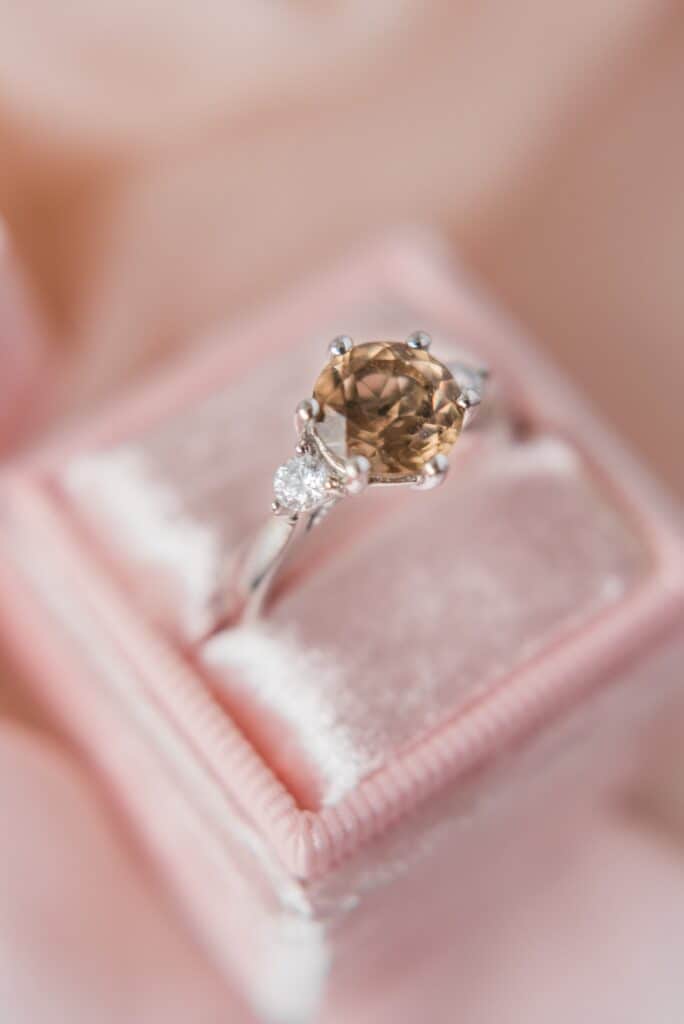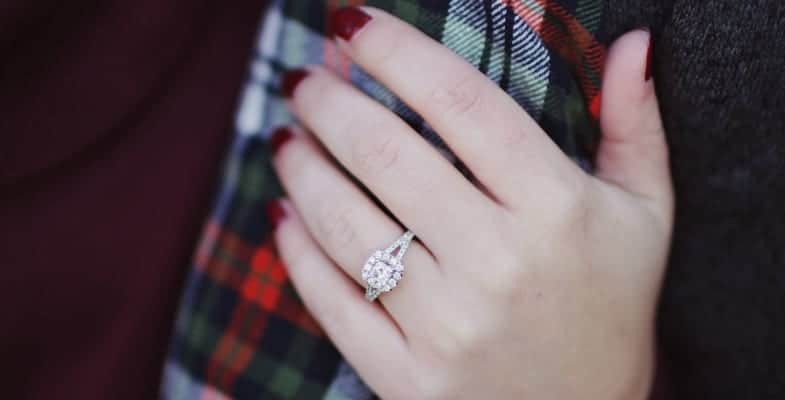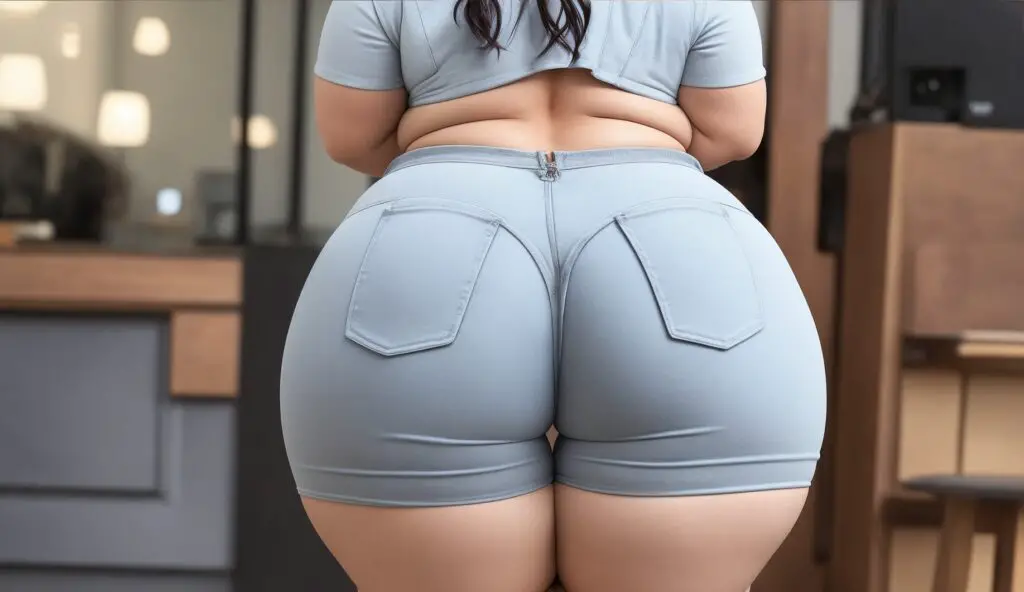Traditionally, every girl dreams of the day she gets to walk down the aisle as a bride to her betrothed. Well, the journey of love is symbolized by lifelong bands which serve as a reminder of eternal commitment. Considering that plus size engagement rings are strapped on one’s finger for a long long time, it is important that you get it right. And this starts right from the engagement band.
Fair enough your spouse may want to uphold the surprise factor; this is okay provided he has the right resources to guide him through. It takes more than a guess to arrive at the precise one. Typically, an engagement ring should have a snug fit. Not too tight that it damages your circulation but at the same time not so loose that it could slip off anytime. Much thought also needs to go into the materials used and the bandwidth because these too impact fit and sizing. And of course, the design and decorative elements should align with what you had in mind. Otherwise, you just might have the ring stashed away in your jewelry box.
Are you in the market for an engagement ring? Find out all you need to know about picking the accurate size, weight, and design. Also, see what rings are trendy right now and when to size up or down. And if you’re not sure exactly what your taste is, don’t worry! There are a ton of options for inspiration. Just read along!
6 Ways to Find the Perfect One
1. Identify an Expert Jeweler
Why this is important is because experience goes a long way. A professional crafter knows exactly what to advise and is better placed to help bring to life your dream ring. There probably will be a healthy number of cuts and designs to choose from so you can zero in on a couple few that closely resemble your vision.

The difference with an expert is their willingness to work with your budget but nonetheless deliver as required. High-pressure salespeople on the other hand aim to convince you into spending more money than planned as opposed to using a customer-centered approach. Therefore, take time to sift through multiple jewelers within your locality or beyond, read the customer reviews, and select one with years of experience in the business.
2. Get your Finger Sized
Ultimately, a faulty move will land you either a size too big or too small. You must know that the finger structure varies from one person to the next. There are tapered fingers that naturally widen towards the base whereas others have their widest area around the knuckle. That implies that the sizing will vary based on different shapes.
Again, each finger is also unique from the other. When on the hunt for an engagement ring, measure only the finger on which the ring will go on, (usually the left ring finger). A common mistake made is using a ring that goes on other fingers for a specimen- like the index or middle. Fine, the fit could be perfect, but this will not give accurate measurements.
Finger shape aside, it is advisable to get measured by a skilled consultant. Homemade techniques may be convenient but they too come only approximately close. And for roomier fingers especially, you may need help getting this done. Unless your sizing skills are on point, a third party is the most certain way not to get false measurements.
Note: the wider your finger, the higher the cost because more metal goes into creating the circumference.
3. Consider Your Occupation
The nature of day to day activities largely dictates what kind of ring will work best. Say for example your line of work involves hands-on tasks like delivery or perhaps you’re a firefighter. The latter does not need a metal ring that could heat up while on your finger. A non-conductive material such as silicon is more forgiving.
4. Select a Flattering Ring Shape
This simply refers to your ring profile, how it looks on the outside. We have dome rings (more classic, traditional) and flat rings which give a more contemporary, urban feel. With a dome, the ring almost takes to a D shape and you will feel the height difference once you squeeze your fingers together. But with a flat ring, there’s less distance between the metal and your finger. It sits very closely.
If you’d like a blend of the two extremes, go for a slightly curved or slightly flat band depending on what looks best on your hand. Test out the various shapes and deduce from the overall appearance.
5. Look to Your Skin Tone
Ladies, skin color is a vital player. Go with a band that naturally blends with your tone while at the same time giving a soft pleasant glow. Today, non-traditional metals are available so you don’t have to tie yourself down to yellow gold, silver, copper, or platinum. We have titanium and wood for instance, or sterling silver for higher-end individuals.
Try a hand at white gold or say rose gold which emanates a somewhat pinkish appeal. Never tire of searching! With due diligence you will discover the best suit. Also, factor in the stones. Would you wish to have something flashy? Diamonds make a good pick. But if you are more conservative then think of alternative gemstones such as rubies or sapphire. There’s no limit to what you can acquire when you are patient enough and have the needed expertise.
6. Get the Appropriate Bandwidth
Bandwidths come in two major categories- thin and wide. Narrower rings almost resemble wire-like thickness so they are quite slim. They tend to work better with individuals who have slender hands. Bigger sized fingers generally will gain better support from thicker rings. However, this does not exempt you from narrow bands if that is your style. In fact, leaner metals make the center stone pop! The important thing is to figure out how thin you can go without sacrificing comfort or how securely the ring stays in place.
Bonus Tips
- Vividly communicate your expectations but do not subdue your consultant’s advice either. They are the experts and as such have extensive knowledge in sizing.
- Nothing beats a bespoke ring when it comes to true fit. It may cost you a couple more bucks but a one-time splurge is worth the countless years you should get in return.
- The bulkier the ring, the more snug a fit it should be. Heavy stones especially need the support to stay face up.
- Ask your service provider whether they do engravings if you would like an added special touch.
- Avoid quirky local jewel stores at all costs.
How to Measure Your Ring Size – DIY
In special instances, ring sizing may demand personal effort. It could be that your jeweler is out of town and perhaps time is running out. Well, desperate times call for desperate measures, and seeing as professional aid may not be an option; there are other avenues to explore. Think of online sizing charts for instance.
Keep in mind that these vary from different jewelers based on the in-house design. There’s not a one size fits all formula to arrive at the correct size. Therefore, to be on the safe side, know beforehand what designs are commonly manufactured. This will help you judge how wide their sizing goes but above all, the possibility of translating a design to your ring size.
That said; let’s take a look at different home techniques you could use.
- Paper size technique- this can be done with a normal paper but for accuracy purposes, it is best to use the provided paper checker. Ring size charts are easily accessible from the net or and most (if not all) come with this handy tool. Download the chart guide and proceed to carefully cut off the numerically labeled paper segment. Insert a tiny slit using a pair of scissors and wrap the two ends securely over your engagement finger-preferably close enough to your knuckle where the ring would naturally sit. Direct the pointy end through the small incision such that it forms a loose knot. Pull a bit tighter till it fits. Your size is the number that is visible through the slit. If you opt to use a string, go for one with no stretch. Dental floss is better. Follow the same procedure by wrapping the thread around your finger. Cut off the excess at the point where the strands overlap. Measure the length against a ruler and compare measurements against the circumferences on the sizing guide. Try this a couple more times until you get the same measurement repeatedly.
NB: Your chart has to be printed 100% to scale or else the results will be faulty.
- Current ring method- a much simpler technique that works if you already have a ring that fits perfectly. Go ahead and place it on the circles available on the chart to identify the precise circumference. A correct size will have the black circle barely visible over the inside of the ring. If you can notice some space between the ring and the circle, the listed size is too small. Conversely, when too big, the circle will overlap the actual ring.
- A key chain- this is what majority of jewelers employ but you can get a plastic model for domestic use. The sizes extend from 1-13 so no matters how fat your fingers, your fit will be accommodated. Each ring carries a number thus it is much easier to figure out your measurements.
Tip
Don’t hurriedly dismiss smaller numbers off the assumption that your fingers are wider than average. You might be surprised to find your true fit isn’t as huge as you imagined. Jewel handlers use the lubricant trick to slide in sizes a tad smaller. After all, you don’t want anything that will flop.
Should You Size Up or Down for Rings
I’ve heard of different myths surrounding the sizing criteria, one outrageous concept being that future brides should round off their dimensions based on their shoe size. Outrightly insane! The logic behind sizing up or down is backed up by sensible reason that is in no way related to footwear, unless you’re desperate to get it wrong.
This decision to go up a notch or lower merely applies to people who come off as half sizes. These are users who fall in between definite numbers. Case example, if an 8 seems too big and so does a 7, your exact fit could be a 7 ½. In extreme cases, we have people whose fit ranges at quarter sizes.
Such individuals are more prone to irregular sizing decisions depending on the bandwidth. Experts suggest to size to the larger if the ring has a very thick body whereas much thinner circumferences are better off rounded to the smaller. This is because a broad metal already takes up quite some space in itself thus will not be as roomy as slim cut designs.
When to Measure Ring Size
Surprisingly, environmental and biological conditions do affect finger measurements. It is therefore necessary to consider timing as well as other internal influencers that might trigger slight variations. Salty foods and very active lifestyles may cause your fingers to swell. Pregnancy too! Whereas very cold climatic seasons could bring about narrower dimensions.
For true ring size, get measured at a time when your temperature feels natural and normal. You also do not want to get measured way in advance before the proposal date. A lot could happen in between and result in a ring that doesn’t slide in as comfortably.
Luckily, you have the resizing option in case of weight changes, but this should be left as a last resort. Two or more resizes may completely ruin the band’s integrity and durability. Sometimes completely write it off. As such, make most of the opportunity to get it right from jump.
Conclusion
An engagement ring will hopefully transverse with you through ages thus ample research is instrumental. Plus-size ring vendors are now growing popular so at the least, you have a wider option base and stylish designs to accessorize with. Aside from your expectations, remember to strike equilibrium by drawing to your partner’s financial situation. Next, you’ll need to find the perfect wedding dress and bridesmaid dresses. Enjoy your hunt!



